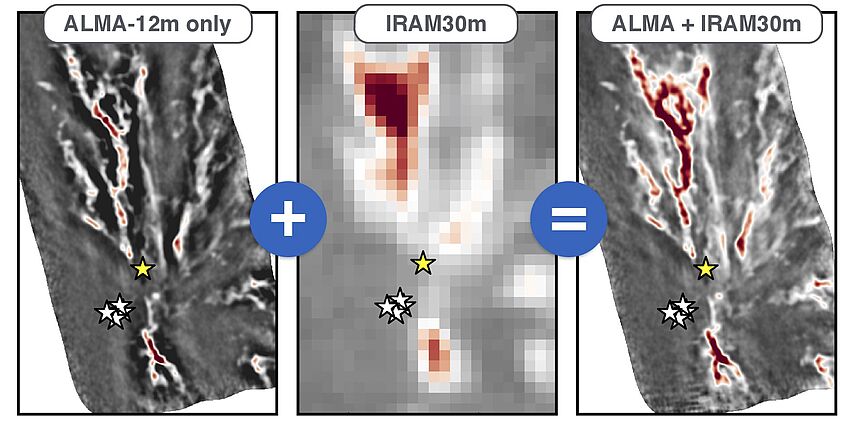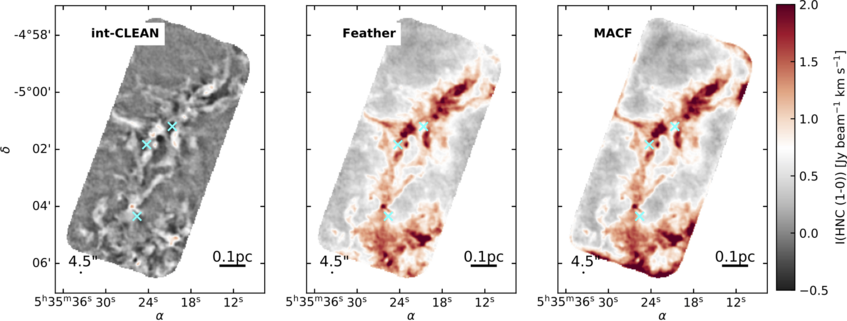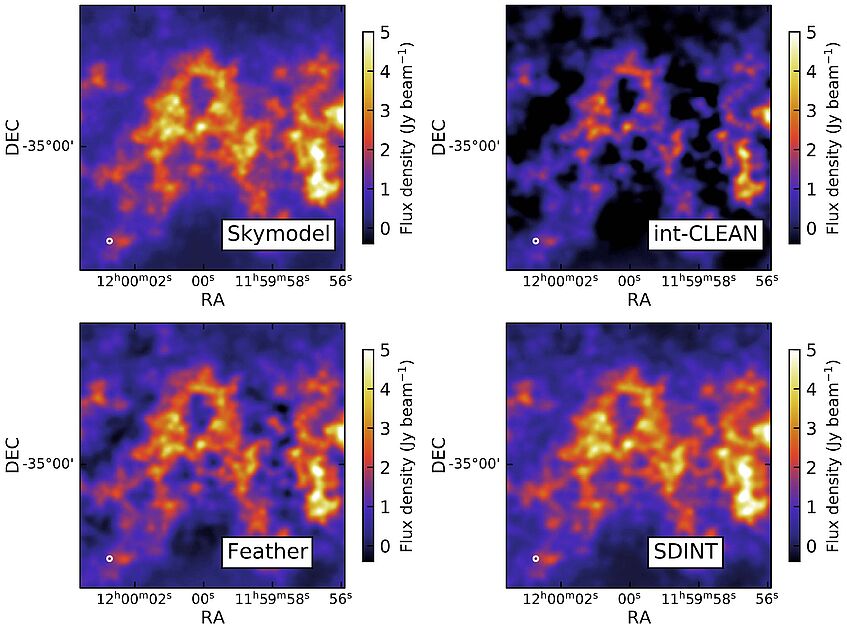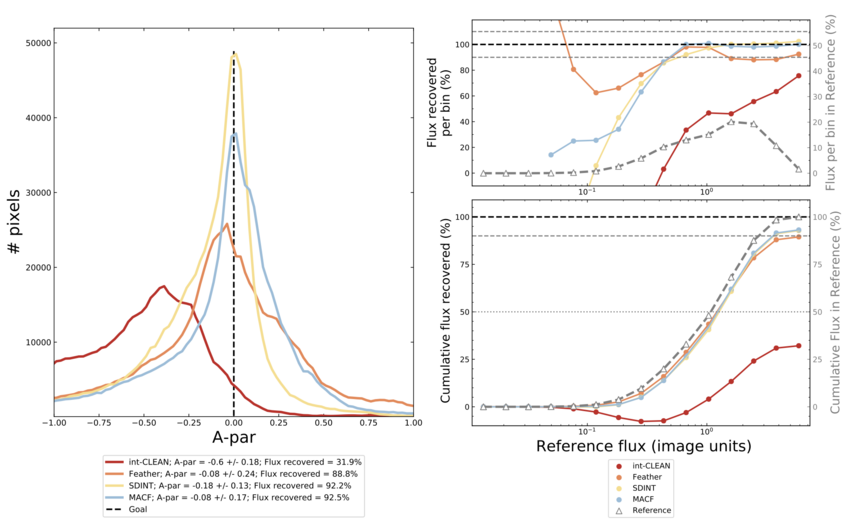Data Combination in the ALMA era
In a key technical development for our EMERGE project, the analysis of our observational data illustrates the need of advanced data combination techniques between high-resolution interferometric (ALMA) and high-sensitivity, low-resolution single-dish (IRAM- 30m) datasets to investigate the intrinsic multi-scale, gas structure of the ISM. See Papers I (Hacar et al, 2024) and II (Bonanomi et al, 2024) for detailed discussions.

Combination of ALMA 12m and IRAM-30m datasets in OMC-1. See also Hacar et al (2018).
Interferometric filtering effects
Our simulations demonstrate that interferometric filtering effect can critically affect the recovery of all emission properties of resolved targets (peak flux, radial profile, and width), even in the case of the simplest geometries such as cores. These filtering effects severely biases all physical properties derived for these structures (i.e. column density, mass, and size). Only the addition of the short-spacing information permits the recovery of the true sky emission down to few times the ALMA beamsize with satisfactory accuracy. As an example, note how cores of different sizes "disappear" in the interferometric-alone observations (ALMA 12m-only & ALMA 12m+7m), and only recovered when the short-spacing information is added (either 12m+7m+TP or ALMA 12m+IRAM-30m).

Synthetic ALMA observations of cores with different sizes (Bonanomi et al 2024). Different panels show the recovered emission comparing models (a) and observations (b-f).
Recovering the true sky emission in ISM observations
The lack of short-spacing information has a profound impact on the recovered emission in ALMA 12m-alone observations (int-CLEAN). Only the use of advanced data combination techniques (Feather and/or MACF) permits the recovery of the true sky emission of resolved ISM structures with extended emission (e.g., in HNC).

HNC maps in OMC-3 produced using different data combination methods: (a) int-CLEAN ALMA 12m-alone data, plus ALMA 12m+IRAM-30m combinations using (b) Feather and (c) MACF methods (Hacar et al 2024).
Preserving kinematic information in spectral cubes
The inspection of interferometric-only spectra (int-CLEAN; blue) demonstrates how the lack of short-spacing information can severely corrupt the kinematic information in all type of molecular tracers. In the case of extended emission the true line profiles can only be recovered after the combination of the single-dish information (via Feather or MACF; black and red lines, respectively).

Effects of data combination in different molecular tracers (Hacar et al, 2024)
DataComb Working Group
The recovery of extended emission is one of the most fundamental challenges for interferometric mapping. EMERGE leads the Quality Assessment team at the DataComb working group (https://github.com/teuben/DataComb) for the exploration of state-of-the-art Data Combination techniques for interferometers such as ALMA (see Plunkett, Hacar, et al (+Suri) 2023)
Data Combination methods in the ALMA era
As part of Plunkett et al 2023, we systematically explored and tested most of the data combination methods currently available in CASA. Our results allow a systematic comparison among different reduction methods and show how DC dramatically improve the data quality in comparison with interferometric-alone reductions.

Comparison of our synthetic skymodel and the maps obtained using interferometric-alone deconvolution (int-CLEAN), Feather, and Model-Assisted Cleaning plus Feather (MACF) methods.
Advance Quality Assessments
As important as the data combination process is the ability to measure the goodness of the reduction. EMERGE develops advanced Quality Assessments for the analysis of interferometric observations (see Plunkett et al 2023 for more information).

Quality Assessment of different data combinations: (Left) Histogram of the Accuracy parameter (A-par); (Right) Flux recovered at different flux bins.
Large scale ALMA mosaic of the 30Dor region
EMERGE collaborates on the study of the 30Dor region observed by ALMA (Wong et al 2022). This works combines 5 mosaics of 12m+7m+TP data in Band 6 in order to investigate the distribution of the 12CO and 13CO (2-1) emission in this massive clusters down to 0.4pc resolution. See also ESO photo release (link).

